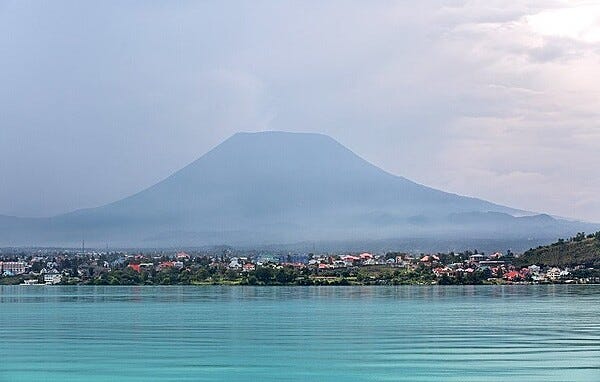Geopolitics and the US-Rwanda Peace Agreement
The Democratic Republic of Congo (DRC) possesses an unparalleled wealth of critical minerals, estimated at "$24 trillion worth of minerals beneath its surface."
The DRC: Global Powerhouse of Critical Minerals
This includes the world's largest reserves of cobalt and significant deposits of copper, coltan, and emerging lithium. These minerals form the backbone of nearly every modern technology, from electric vehicles to smartphones, making the DRC a key player in the global clean energy and technological revolutions. The DRC is the undisputed global leader in cobalt production, responsible for roughly 70–80% of the world’s supply. In 2024, it mined approximately 254,000 metric tonnes of cobalt, which is 13 times more than Indonesia.
In 2024, the DRC produced an estimated 3.3 million metric tonnes of copper, accounting for more than 11% of global output and making it the second-largest producer in the world after Chile. The copper from the DRC boasts among the highest grades globally, often over four times richer than the global average. This includes the world's largest reserves of cobalt and significant deposits of copper, coltan, and emerging lithium. These minerals are the backbone of nearly every modern technology, from electric vehicles to smartphones, making the DRC a pivotal player in the global clean energy and tech revolutions. The DRC is the undisputed global leader in cobalt production, responsible for roughly 70–80% of the world’s supply. In 2024, it mined approximately 254,000 metric tonnes of cobalt, which is 13 times more than Indonesia.
In 2024, the DRC produced an estimated 3.3 million metric tons of copper, accounting for more than 11% of global output, making it the second-largest producer in the world after Chile. DRC's copper boasts among the highest-grade in the world, often over four times richer than the global average.
The Dark Legacy: Mineral Wealth and Conflict in the DRC
Historically, this mineral wealth has been both a blessing and a curse, fueling decades of conflict and exploitation, dating back to King Leopold II's brutal regime. More recently, the conflict in the eastern DRC, particularly involving groups like M23 (reportedly backed by Rwanda), has been driven by control over mining regions, with minerals illegally smuggled and laundered through neighbouring countries, especially Rwanda.
King Leopold II transformed the Congo Free State into a brutal forced labour camp dedicated to rubber production, and later mining. Large-scale mining began in the mineral-rich southern Katanga region, with firms like Union Minière du Haut-Katanga (UMHK) dominating copper and later cobalt production. Cobalt became strategically important during World War II and the Cold War due to its military applications.
From Nationalisation to Liberalisation: The DRC’s Mining Transformation
Post-independence, President Mobutu Sese Seko nationalised UMHK into Gécamines, which, despite being a mineral powerhouse in the 1970s and 80s, suffered from mismanagement, underinvestment, and was often used to finance Mobutu’s authoritarian rule, leading to its collapse by the 1990s.
Guided by the World Bank and IMF, the DRC passed a landmark piece of legislation in 2002 to liberalise its mining sector, slashing state ownership requirements and offering generous profit repatriation terms for investors. This strategy succeeded in drawing capital, most notably from China, whose companies became major investors.

Backed by Beijing and the Belt and Road Initiative, Chinese companies secured sweeping infrastructure-for-minerals deals, notably the 2007 $6 billion resource-for-infrastructure agreement (Sicomines deal). Chinese companies control 70%–80% of all industrial cobalt mining operations in the DRC, including the massive Tenke Fungurume mine. China accounts for over 50% of the Democratic Republic of the Congo’s copper production. China dominates the crucial refining stage of the supply chain. Over 80% of the world’s cobalt is refined in China, with 90% of that coming from the Democratic Republic of the Congo's mines. China refines nearly 40% of global copper production.
How DRC’s Riches Fuel War and Global Complicity
Rebel groups like Rwanda-backed M23 violently control mines in eastern DRC—earning $300,000–$800,000 monthly from coltan, cobalt, and gold—to fund their operations. Minerals are systematically smuggled into Rwanda (which reported $1.1B in 2023 exports despite negligible reserves), laundered, and sold globally. International actors enable this: the EU signed a raw materials deal with Rwanda lacking safeguards, while the U.S. sources 35%+ of its tantalum from Rwanda, five times more than from the DRC. Despite humanitarian crises displacing seven million people, corporations like Traxys continue buying "laundered" minerals, and weak regulations (e.g., failed OECD guidelines) perpetuate the war economy. Breaking this cycle demands sanctions on enablers, transparent supply chains, and ending Rwanda's occupation of eastern DRC.
The US-Rwanda Peace Agreement
In June 2025, former President Trump announced a U.S.-brokered peace agreement between the DRC and Rwanda, aiming to end decades of conflict. Crucially, the deal grants the U.S. direct access to the DRC’s vast mineral reserves (notably cobalt, copper, and lithium), breaking China’s near monopoly in the region. The DRC strategically leveraged its resources—mirroring Ukraine’s approach with Western aid—to secure U.S. security backing. This pivot could accelerate Western infrastructure projects, such as the Lobito Corridor railway, thereby bypassing Chinese-controlled supply chains and reshaping global critical mineral flows.
However, significant hurdles threaten the deal:
China’s refining dominance (70%+ of global cobalt processing) means DRC-mined ore may still need Chinese refinement.
Excluded rebel groups: The M23, which controls key mining zones, was not a party to the agreement, thereby undermining enforcement.
Investment risks: Billions are needed for processing and infrastructure in the DRC, a region plagued by militias, corruption, and instability.
Geopolitical fallout: China’s reaction to losing its DRC stronghold remains uncertain.
While the deal signals a U.S. push to challenge China’s mineral hegemony, success hinges on overcoming refining bottlenecks, securing rebel-held territories, and stabilising one of the world’s most volatile regions.
Source: CrossDock Insights Newsletter by Shyam Gowtham
https://crossdockinsights.com/?_bhlid=542b039fa1e9b79c67f7594a4679fa9ba25c8db1&utm_campaign=the-washington-accord&utm_medium=newsletter&utm_source=crossdockinsights.com




